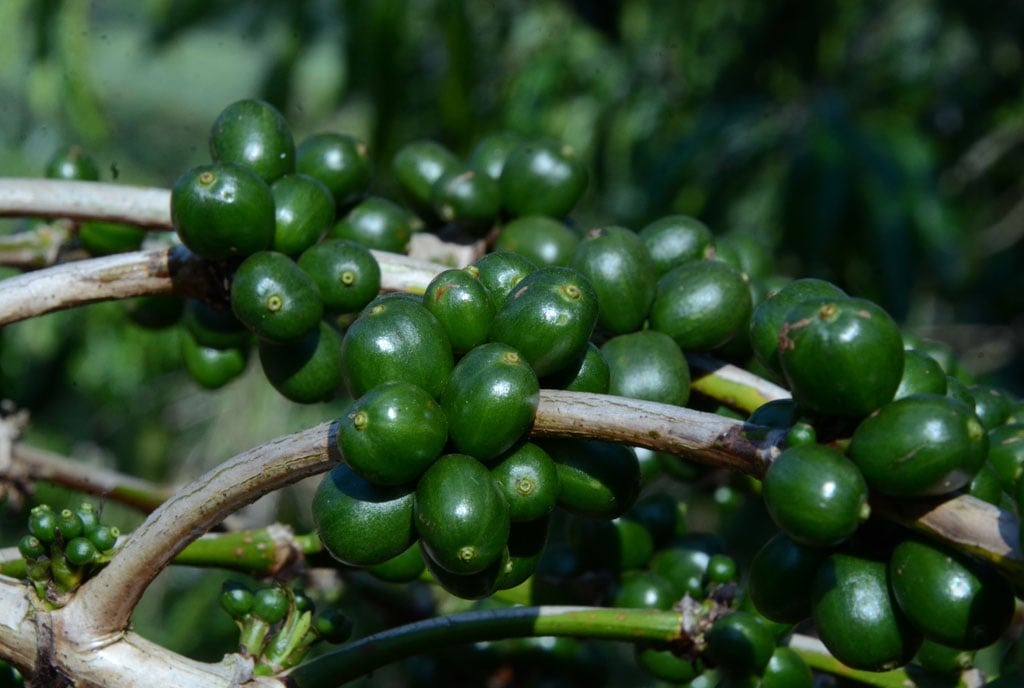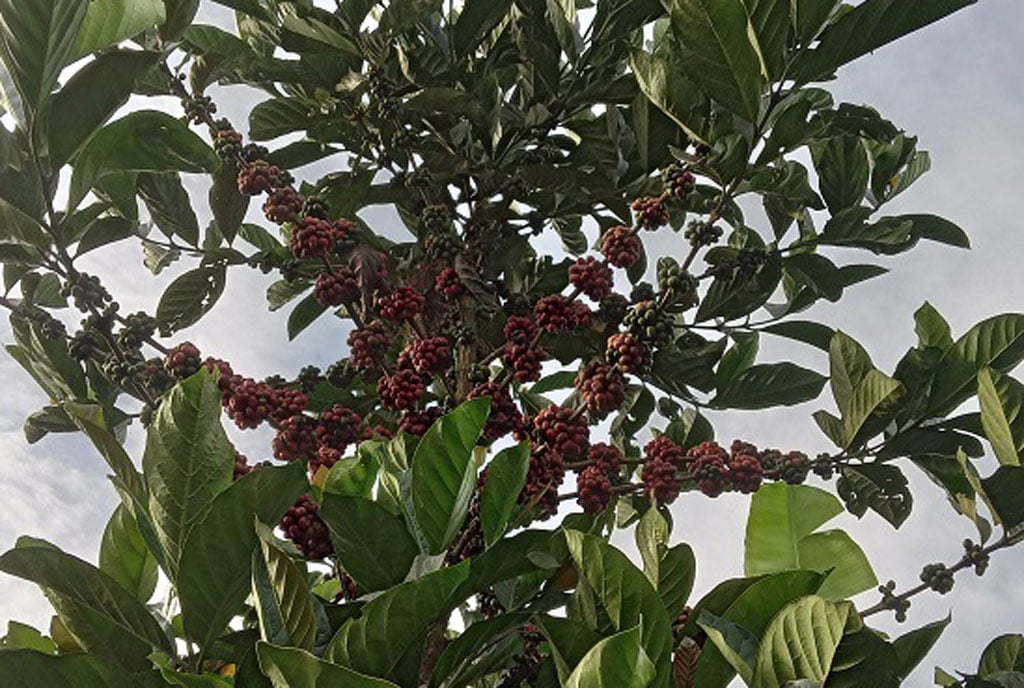Prime
The ABC of understanding coffee prices

Coffee. PHOTO/GEORGE KATONGOLE
What you need to know:
- Uganda, which is among the largest coffee producers in the world, is known as ‘a country that produces coffee it does not drink.’
- Coffee consumption is still very low, estimated to be between three and four percent of the coffee produced.
- Most of the coffee grown is therefore exported. In 2020, Uganda exported 26 per cent of the continent’s coffee and 1.75 percent of the world’s coffee worth $539m.
Coffee is characterised by high levels of price fluctuation, which expose the poorly equipped farmers to numerous price risks.
Producers face three main risks in the production and marketing of coffee; the volatility of prices, yield risk from the uncertainty of production and currency risk due to exchange rate fluctuations.
Many producers are not concerned with the risks per se, but they (risks) directly affect their income.
The international trading futures market is very volatile. In 2021, for instance, the price of coffee rose 30 per cent. The futures had previously reached a decade high in February 2022 on lower than expected output of Brazil and Colombia caused by environmental and shipping disruptions.
Since then, prices have fallen almost 40 percent after the pressure by previous speculations of a record Arabica yield for Brazil in 2023.
Equipping traders with market information is therefore helpful in giving farmers the best price there is on the market while increasing the value of Uganda’s coffee.
100 coffee traders from 66 organisations, most of whom are involved in local coffee trading, completed a beginner’s free three-day price risk management training by the Agribusiness Development Centre (ADC) at dfcu Bank Training Centre in Namanve Industrial Park, Mukono District.
The Agribusiness Development Centre builds the capacity of agribusinesses through training to become resilient. The training, funded by Rabobank Foundation and dfcu Bank Uganda is aimed at equipping traders with information on how the coffee market works and how the international trends influence local trading.
Roland Sekajja, a price risk trainer says: “The intention of this training is to help you and make better and profitable decisions and earn more value from your coffee.”
Focus on the consumer
The consumer market for coffee is rapidly evolving, requiring traders and farmers to adapt to their changing needs. The market changes greatly impact the quality of the coffee produced. Looking at the supply chain, for instance, in 2018 the sales of “sustainable coffee” outgrew overall coffee sales by 5 per cent in volume while coffee marketed as environmentally sustainable saw a 52 percent growth despite making up just 0.4 of the coffee on the markets.
These environmental claims are offering traders an opportunity to seek opportunities into new markets.
According to Wilberforce Kayonga, the Business Advisor and lead specialist in Price Risk Management training at ADC, by focusing on the consideration of the buyers, coffee traders are able to fully understand what the market requires.
“So take a look at your business. Ask yourself if your supply chains match the desired quality at the world market,” Kayonga says.
Speculation
Coffee is actively traded in the London International Financial Futures Exchange (LIFFE) and the New York Board of Trade (NYBOT) commodity exchanges.
The LIFFE/NYBOT coffee contracts specify a standard lot size and are not available locally, which makes them inaccessible to small producers.
The supply and demand of coffee is mainly speculative but also largely affected by local politics and the global economic situation as well as weather trends in the big producing countries.
Therefore, one has to put into consideration the short- and long-term forecasts when formulating the harvest plan.
Futures
Coffee futures are pre-defined contracts that allow buyers and sellers to agree on a transaction price of a predetermined quantity of coffee at various points in the future.
A comprehensive understanding of the coffee futures market can help illustrate the mechanics of the coffee industry.
The Intercontinental Exchange (ICE) in New York is the centre of the Arabica trade while London Robusta Coffee Futures (LCF) deals with Robusta.
At the ICE and LCF, buyers and sellers use the coffee futures market price to trade green coffee in US dollars or British pound.
Trading is outlined into 14 set time slots (delivery months) to choose from going forward into the future, as far out as 2.5 years.
The exception of Ethiopia
Coffee is seldom offered by exporters on a differential basis in Ethiopia. The Ethiopian monetary system prohibits local exporters from hedging their risk by trading futures.
Instead, producers are offered an outright price. Furthermore, specialty coffees in Ethiopia tend to be high above the standards of the grades tenderable to the NY exchange.
Coffee certification
Uganda consumes just about 2 percent of the coffee it produces. Therefore, consumers elsewhere are willing to pay a little more for well-produced coffee with more interesting profiles.
Coffee certification is one way to protect the environment in which the coffee is produced and the coffee producers.
Organic certified
The main requirement for certified organic coffee is that no synthetic fertilisers, herbicides, or pesticides are used on the land.
The organic certified coffee market was at 6.2 million 50 kilogramme bags with main markets in the US and Germany. The farm needs to show a plan for sustainable farming, including the prevention of soil erosion.
The main problem with organic certification is that it can be expensive or complicated to obtain. However, once obtained, producers can typically demand higher prices for their crops. Interest in organic coffee tends to follow general organic trends.
Demand is expected to continue growing in part because of the European Green Deal which aims to significantly enlarge organic production and consumption. Organic coffee imports by the UE reached 131 metric tonnes in 2020 signalling growth.
Fairtrade
The concept of Fairtrade is to pay producers fair wages to promote global equity and alleviate poverty.
Fairtrade is driven by a community of consumers who stand for fairness and justice when buying agricultural products. Other products in this category of certification includes; bananas, cocoa, flowers, sugar and wine.
Fair trade coffee need not be organic, but coffee with both certifications can fetch higher prices.
Rainforest Alliance
Recognised by the green frog seal, Rainforest is a certification standard that ensures responsible sourcing of coffee. It promotes coffee that is better for people and nature aimed at protecting forests and biodiversity and improving farmer livelihoods.
The Rainforest Alliance certifies many agricultural products. In 2017, they merged with another certifier, UTZ Kapeh, and the two came out with a new set of criteria in 2020.
Training
Participants go through theories of financial literacy, governance and agricultural products marketing to make farmer-based organisations self-sufficient by also linking them to financing.
The training also equips them with skills to develop commercial strategies and make them more sustainable from the local trading environment to the international trading space.




